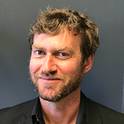
The impact of the recent boomin what U.S. critics and publishers are increasingly calling autofiction is a notable, if curious, phenomenon. Authors such as Chris Kraus, Sheila Heti, Ben Lerner, Maggie Nelson, and Rachel Cusk, as well as the wildly successful translations of works by Karl Ove Knausgård and Elena Ferrante, have gained both readerly and critical accolades. In various ways, autofictional works collapse fiction, nonfiction, and autobiography into texts that, as Marjorie Worthington writes, “constantly play with readerly expectations about memoir and fiction, thwarting both and thereby forcing a recognition that . . . the line is at times rather permeable” (149). While something about these authors’ works seems radically new, however, several critics have put this boom into historical and cultural perspective. Autofiction, it turns out, has a notable literary and historical lineage.
Available at: http://works.bepress.com/ralph_clare/46/
